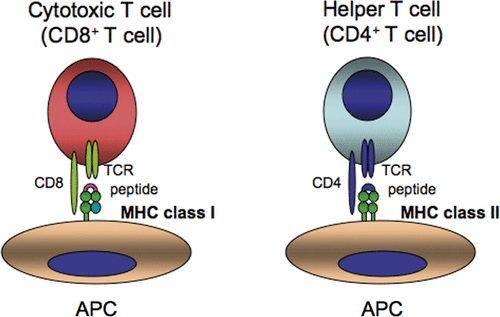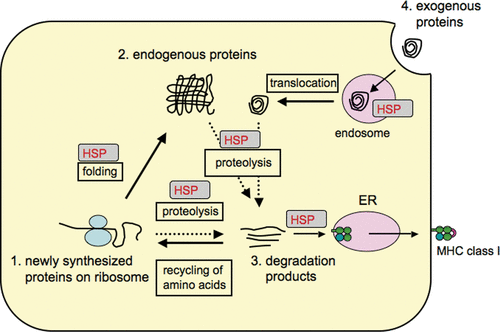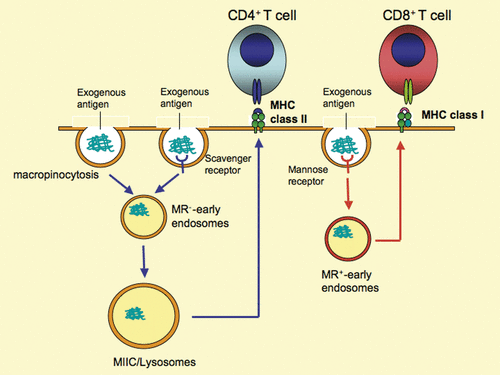Figures & data
Figure 1. CD8+ T cells and CD4+ T cells recognise peptides in the context of MHC class I and MHC class II molecules, respectively. TCR, T cell antigen receptor; APC, antigen presenting cell.

Figure 2. HSP mediate degradation of a few percent of newly synthesised proteins as well as mature proteins. In dendritic cells (DC), HSP seem to facilitate the degradation of even internalised exogenous proteins following their translocation to the cytoplasm. The proteolysis step depends on the ubiquitin-proteasome system to produce peptides presentable by MHC class I molecules.

Figure 3. Different fates of internalised antigens by distinct cell surface receptors. The antigen internalised by macropinocytosis and/or scavenger receptor-mediated endocytosis is presented by MHC class II molecules to CD4+ T cells. In contrast, the same antigen internalised by mannose receptor-dependent endocytosis is presented by MHC class I molecules to CD8+ T cells. The molecular mechanisms responsible for the two distinct processes remain to be elucidated. However, the difference between the two pathways could be linked to the diverse mechanisms responsible for antigen trafficking associated with HSP, which remain elusive. MIIC, MHC class II compartment; MR, mannose receptor.
